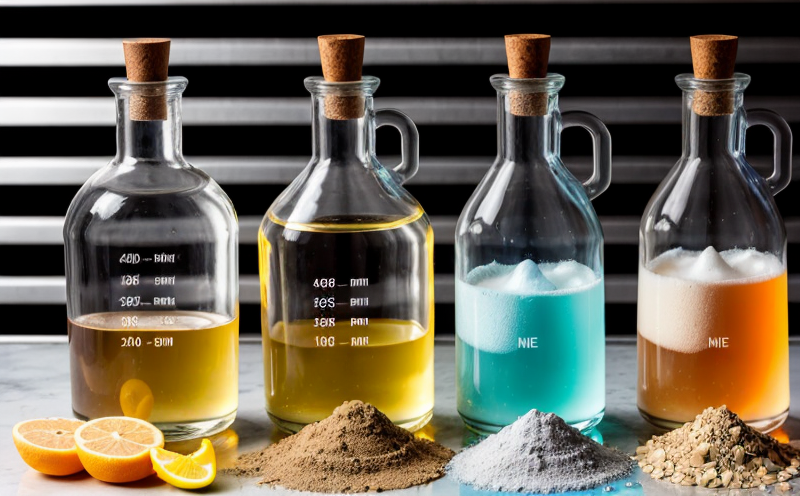BS EN 50342 Chemical and Electrolyte Testing of Automotive Lead-Acid Batteries
The BS EN 50342 standard is a crucial document for automotive lead-acid battery manufacturers, quality managers, compliance officers, and R&D engineers. It provides comprehensive guidelines on the chemical analysis and electrolyte testing of these batteries to ensure they meet stringent performance requirements.
Automotive lead-acid batteries are essential components in modern vehicles, providing reliable power for starting engines and supporting electrical systems during periods when the engine is not running. The quality and reliability of these batteries can significantly impact vehicle performance and safety. Therefore, adherence to international standards such as BS EN 50342 is indispensable.
The standard covers various aspects of chemical analysis and electrolyte testing, including:
- Acid concentration
- Specific gravity (SG) measurements
- Sulphuric acid content determination
- Total acidity measurement
- Electrolyte purity assessment
The BS EN 50342 test procedure ensures that the chemical composition of the electrolyte is within specified limits, which directly affects battery performance and lifespan. By adhering to this standard, manufacturers can ensure consistent quality across their product lines.
Key parameters for the testing include:
- Acid concentration: The amount of sulphuric acid in the electrolyte is critical for battery performance. It must be within a specific range to optimize power delivery and longevity.
- Specific gravity (SG): SG measures the density of the electrolyte relative to water. This measurement helps determine the state of charge of the battery.
- Sulphuric acid content: The standard specifies the acceptable level of sulphuric acid, which must not exceed certain thresholds to prevent degradation and ensure safe operation.
- Total acidity: Total acidity is a measure of the overall concentration of acids in the electrolyte. It influences the battery's ability to conduct electricity effectively.
- Electrolyte purity: Purity ensures that there are no impurities or contaminants that could negatively impact battery performance and lifespan.
The testing process involves several steps, each aimed at ensuring accuracy and reliability:
- Sample preparation: Proper handling of the samples is crucial to avoid contamination. The electrolyte is carefully extracted from the battery cells under controlled conditions.
- Analysis methods: Various analytical techniques are employed depending on the parameter being tested, such as gravimetric analysis for specific gravity or titration for total acidity.
- Data interpretation: The raw data obtained from these analyses is compared against the specified limits in BS EN 50342 to ensure compliance.
- Reporting: A detailed report is generated, summarizing all test results and any deviations from the standard. This report is essential for quality control and assurance processes.
The importance of this testing cannot be overstated. It ensures that automotive lead-acid batteries meet the highest standards of performance and reliability, contributing to safer and more efficient vehicles. Compliance with BS EN 50342 helps manufacturers maintain a competitive edge in an increasingly stringent regulatory environment.
By conducting thorough chemical and electrolyte analysis, we can ensure that each battery meets the exacting requirements set forth by this standard. This not only enhances product quality but also ensures compliance with international regulations.
Scope and Methodology
| Test Parameter | Description | Method of Measurement | Acceptance Criteria |
|---|---|---|---|
| Acid Concentration | Determines the amount of sulphuric acid in the electrolyte. | Gravimetric Analysis | Range: 26–30% |
| Specific Gravity (SG) | Measures the density of the electrolyte relative to water. | Buoyancy Method | Range: 1.250–1.350 g/cm³ |
| Sulphuric Acid Content | Assesses the concentration of sulphuric acid in the electrolyte. | Titration | Range: ≤4% deviation from specified limits |
| Total Acidity | Measures the overall acidity level in the electrolyte. | Potentiometric Titration | Range: 1.8–2.2 N H₂SO₄ |
| Electrolyte Purity | Evaluates impurities and contaminants in the electrolyte. | Infrared Spectroscopy | Impurity level ≤0.5% by weight |
The methodology for each test is meticulously defined to ensure consistency and accuracy. The use of appropriate analytical techniques ensures that all parameters are measured accurately, providing reliable data.
The acceptance criteria outlined in the table above must be strictly adhered to. Any deviation from these limits can indicate potential issues with the battery's performance or lifespan. Adherence to these standards is crucial for maintaining product quality and ensuring compliance with international regulations.
Benefits
The benefits of conducting BS EN 50342 chemical and electrolyte testing are manifold:
- Enhanced Performance: By ensuring that all parameters meet the specified limits, we can enhance battery performance, leading to more efficient vehicles.
- Increased Reliability: Reliable batteries contribute to safer driving conditions by providing consistent power supply during critical moments.
- Improved Quality Control: Regular testing allows for early detection of any issues, enabling timely corrective actions and improving overall product quality.
- Compliance with Standards: Adherence to international standards ensures that products meet regulatory requirements, facilitating easier market entry in various countries.
- Customer Satisfaction: Providing high-quality batteries enhances customer satisfaction, leading to repeat business and positive口碑





